Pittsburgh’s Lost Steamboat: Treasures of the Arabia
APRIL 24, 2014 – JAN. 11, 2015 This exhibition examined the largest time capsule of pre-Civil War items ever discovered.
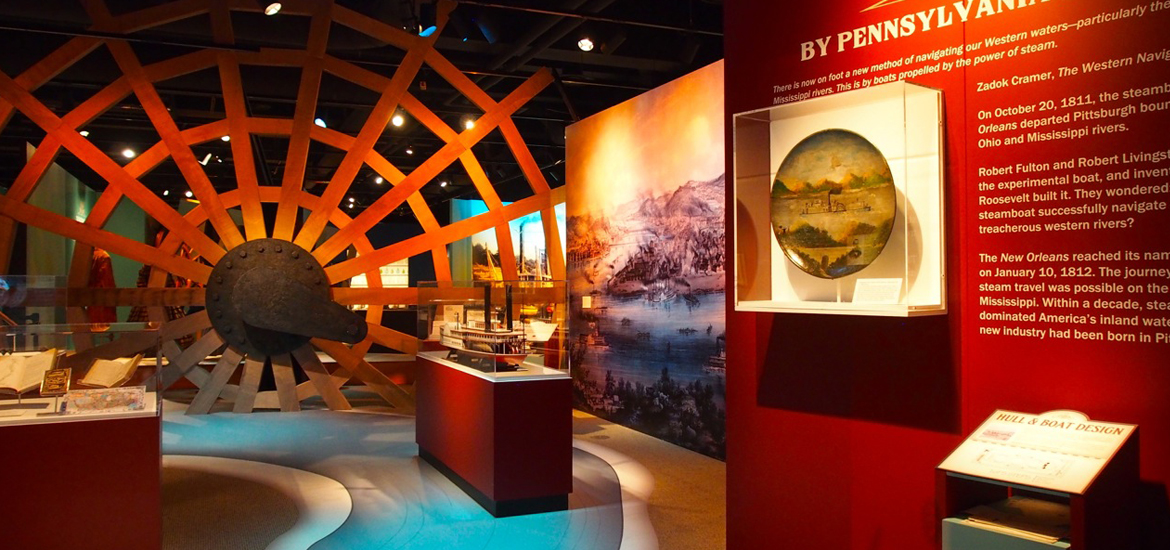
Travel back in time to when Pittsburgh was the Gateway to the West with the History Center’s new major exhibition, Pittsburgh’s Lost Steamboat: Treasures of the Arabia. By popular demand, the exhibit has been extended until Jan. 11. Visit today!
Explore an era when Pittsburgh was the steamboat center of America. The Arabia, built in the famed Pringle boatyard in Brownsville, Pa. and launched in Pittsburgh in 1853, was one of hundreds of steamboats that began life in the boat yards along the Monongahela and Ohio rivers. Sunk in the Missouri River in 1856 and sealed in an oxygen-free environment, the Arabia became a remarkable time capsule when she was rediscovered 150 years later by a group of modern-day treasure hunters deep below a Kansas cornfield.
Watch the Video
Join History Center President and CEO Andy Masich on a guided tour of the Treasures of the Arabia exhibition.
A Treasure Lost and Found
The Arabia ran on the Ohio River for two years before owners sold her to Missouri interests in May 1855. The boat ended up on the Missouri River just as thousands of new settlers were heading west to the Kansas-Nebraska frontier. After surviving multiple trips on the treacherous Missouri—including an attempt to smuggle guns into Kansas for the antislavery cause—the Arabia struck a tree snag and sank near Kansas City, Mo. during its final journey in September 1856.
Packed with nearly one million objects, the boat gradually disappeared into the muddy bottom of the Missouri. As the years passed, the river changed course, leaving the Arabia buried 45 feet below a cornfield in what is now part of Kansas. Sealed in an anaerobic (oxygen-free) environment, the Arabia’s frontier cargo remained perfectly preserved until the boat was unearthed in the late 1980s.
Now you can explore that discovery for yourself. Pittsburgh’s Lost Steamboat: Treasures of the Arabia features nearly 2,000 artifacts, including everything from coats and boots to fine china and a jar of 160-year-old pickles, still looking fresh and green, all in an immersive museum environment ideal for visitors of all ages.
Hop aboard to enjoy the largest time capsule of pre-Civil War items ever discovered as part of Pittsburgh’s Lost Steamboat: Treasures of the Arabia.
ARTIFACT SPOTLIGHT: 160-YEAR-OLD PICKLES
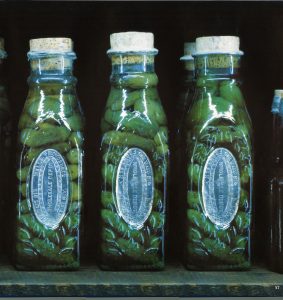
Courtesy Arabia Steamboat Museum. Photo by Dave Hawley.
Along with dry goods and building supplies, the Arabia’s cargo included a wide variety of canned and bottled food like these pickles, still preserved after more than 160 years.
Exhibit Must-Sees
- A jar of pickles from 1856, still intact after more than 160 years.
- Wool shirts, hats, and a pair of plaid pants, all destined for frontier stores in 1856.
- A rare Sharps Model 1853 Carbine and Ames bayonet, seized on the Arabia while being smuggled into Kansas by New England abolitionists.
- Beautiful blue and green glass scroll flasks from Christian Ihmsen & Sons and a balance scale from the Pittsburgh Novelty Works, just a few of the hundreds of Pittsburgh products shipped west in the 1850s.
- Barrel lid folk painting of the steamboat New Orleans, celebrating the first steamboat to travel down the western rivers in 1811.
Exhibit Gallery
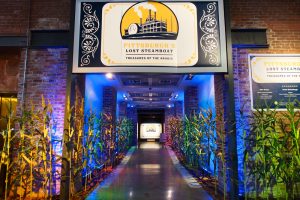
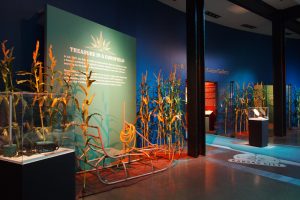

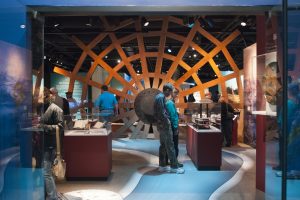
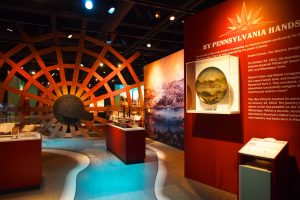
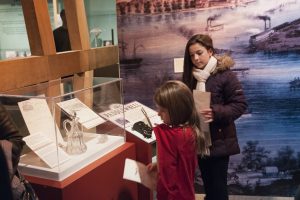
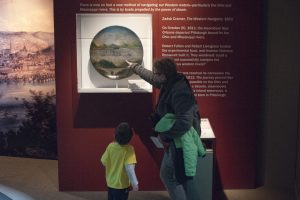
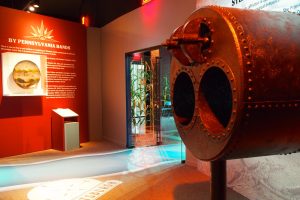
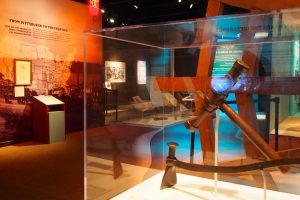
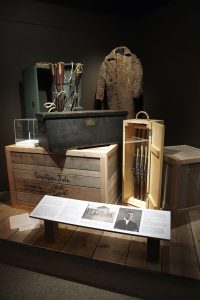
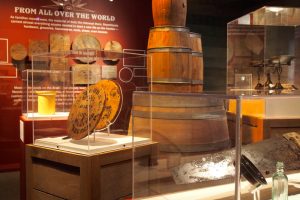
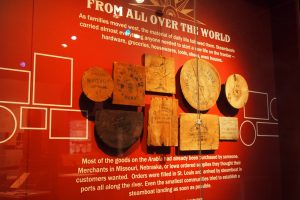
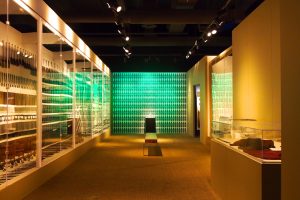
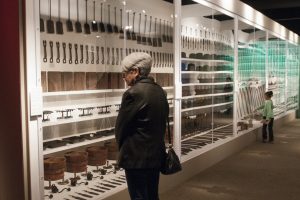
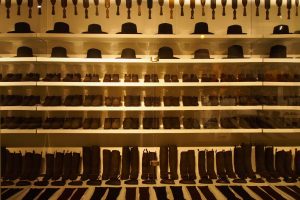
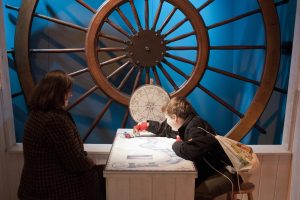
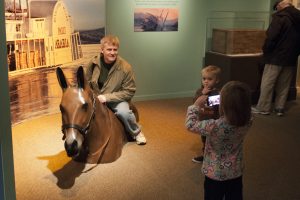
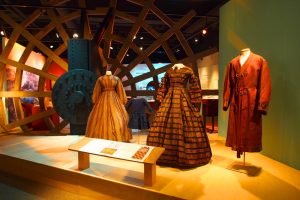
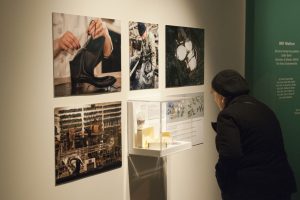
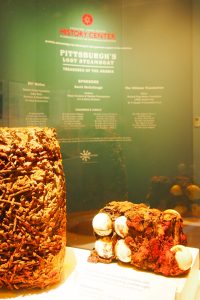
Did You Know?
- The first steamboat to successfully travel down to the Ohio and Mississippi rivers to New Orleans left from Pittsburgh in 1811.
- By 1849, Pittsburgh’s wharf welcomed more than 2,000 steamboats every year.
- The Arabia was only three years old when it sank. Most western river steamboats lasted less than five years.
- The Arabia’s final cargo included more than 2,000 packages, 10 barrels of whiskey, and two frame houses.
- The Arabia’s cargo hold was only 4’7” high, not enough for most adults to stand at full height.
- The only passenger lost when the Arabia sank was a carpenter’s mule, left tied to the deck when people fled the sinking boat.
- The Arabia’s cargo remained in such a remarkable state of preservation because it was sealed in a light-free, anaerobic (oxygen-free) environment. (Kind of like a stasis chamber.)
- If at first you don’t succeed: The Hawley family tried to find and excavate eight other boats before they successfully uncovered the Arabia.
- Larimer Avenue in Pittsburgh and Larimer Square in Denver, Colorado are named for the same family. William Larimer left Pittsburgh by steamboat for the Nebraska frontier in 1855 and eventually helped found the city of Denver.
ARTIFACT SPOTLIGHT: SCROLL FLASKS
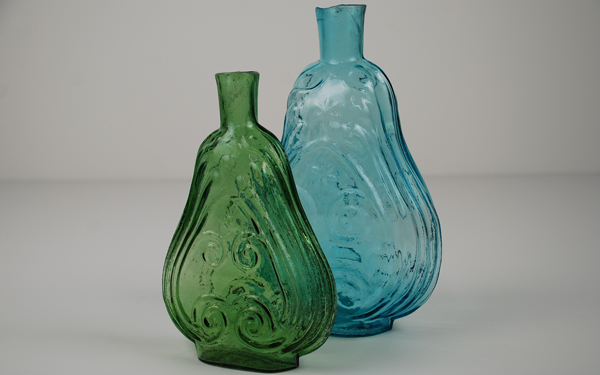
Scroll flasks made by Christian Ihmsen & Sons. Photo by Elizabeth Simpson.
Nearly 100 of these elegant glass flasks were recovered from the Arabia. Steamboats carried Pittsburgh glassware and window glass across the western frontier. Courtesy Arabia Steamboat Museum.
Artifact Gallery
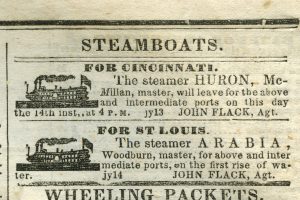
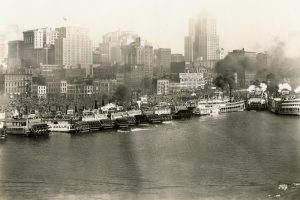
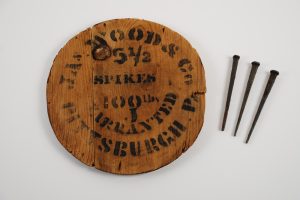
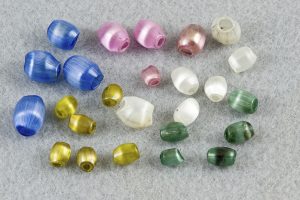
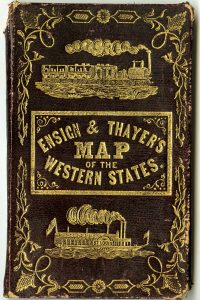
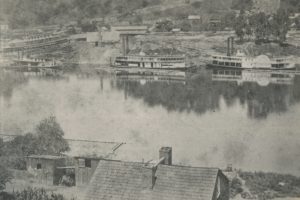
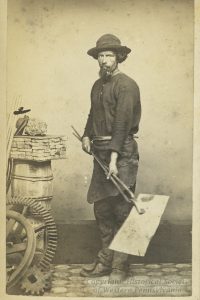
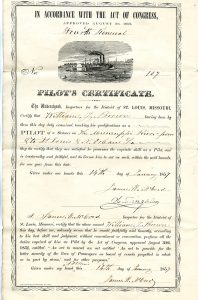
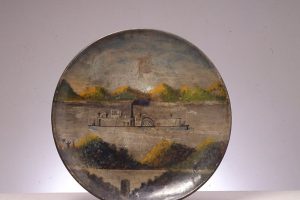
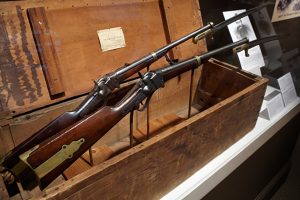
Exhibit Sponsors
David McCullough
BNY Mellon
The Hillman Foundation
Bozzone Family Foundation
Dollar Bank
Beverlynn & Steven Elliott
The Heinz Endowments
Jendoco
Master Builders of Western Pennsylvania
Ann & Marty McGuinn
Mylan
Richard King Mellon Foundation
UPMC Health Plan
W. P. Snyder III Charitable Fund
We extend a special thank you to the Hawley Family, Flo and Bob and David and Laurie, their River Salvage, Inc. partners, especially Jerry Mackey and his wife Joan, and the staff at the Arabia Steamboat Museum. Without their tireless dedication and extraordinary efforts this exhibition would not be possible.